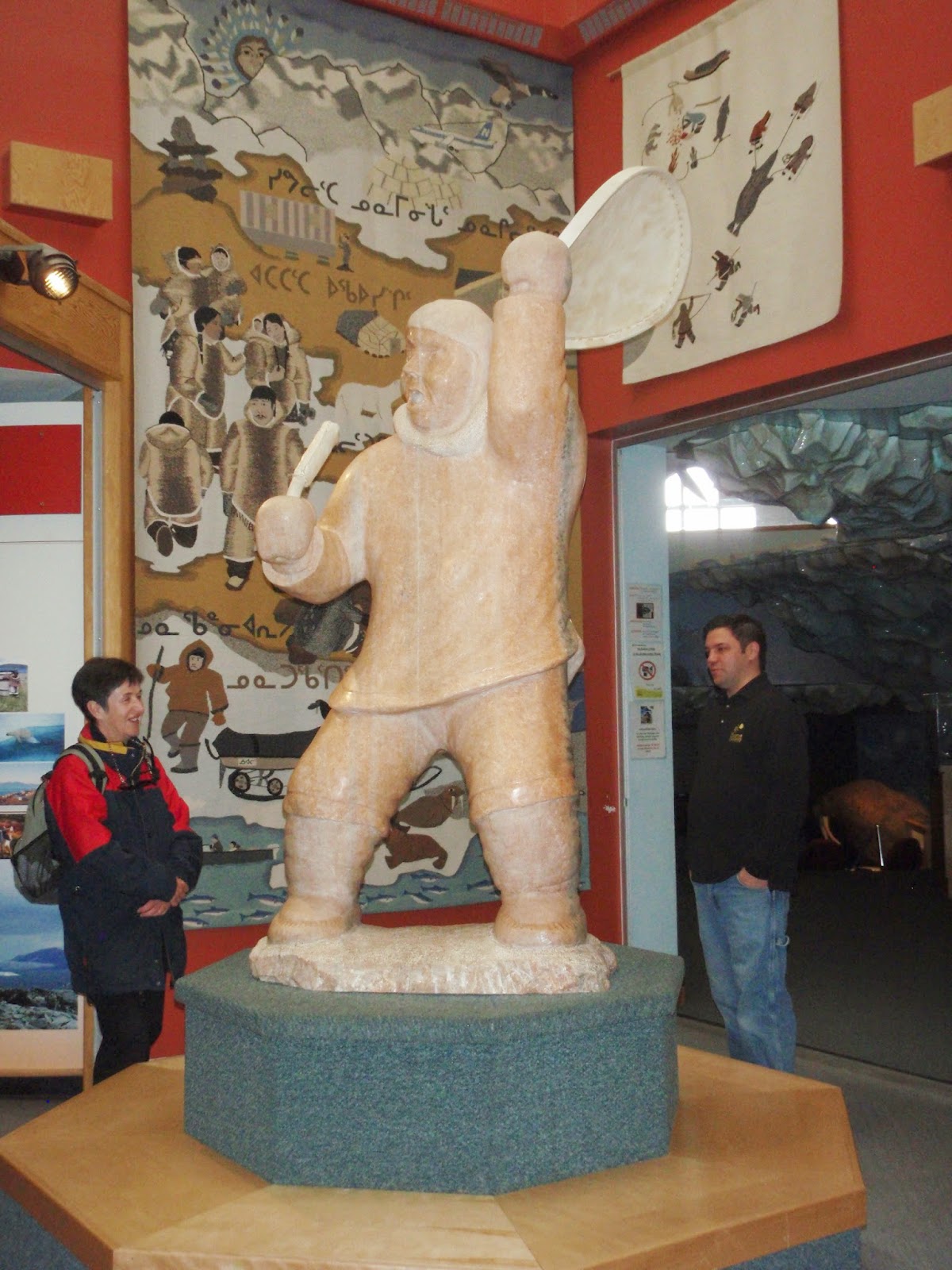Disembarkation Day. We sail up Frobisher Sound on our last morning, Iqaluit in sight far in the distance. Once the anchor is dropped our luggage is winched down in nets and couriered to shore in zodiacs. We don our red wet weather gear for one last boat ride, and then hike up the long beach from the low tide line. The staff sort our lifejackets, boots, pants and coats as we strip off our expedition wear and transform into tourists again. It's been a wonderful trip and I'm sorry to see it end, but I'm really looking forward to time on our own after being confined with 95 others for 2 weeks.
 |
| We arrive by zodiac at low tide and hike up the long beach. Lack of infrastructure is a problem throughout the north. |
 |
| From the hilltop, most of Iqaluit spread out before us |
We have 2 days in Iqaluit with Barb and Greg before flying home. A town of 7000, it's clearly booming. Construction cranes hover over downtown, new subdivisions still clad in Tyvek sprout across the hillsides, and traffic snarls around the North Mart. Half Inuit, half white, bubbling with English, French and Inuktitut, it's a vibrant, eclectic mix of Canadian images. Our 'boutique hotel' is a well turned out collection of Atco trailers, like most northern hotels. Our 42 inch TV features movies in 4 of our native languages. Snowmobiles, boats, quads, bikes, dogs and old trucks dot local yards. Hockey stickers festoon windows, as well as the occasional rainbow sticker, marijuana sign, and various
 |
| Carvings surround Nunavut College |
provincial flags. Gas is $1.35 a liter, while milk is $2.50. The most popular restaurant in town offers shwarmas and pizza, but caribou features on several menus. (There is none though, and the reason may be a poor hunt last year.) Arctic char is ubiquitous - fresh on menus, frozen in the market, dried or smoked in every shop.
The landscape is northern - this is Baffin Island after all. No trees, little vegetation, and lots of dust in town. But there is rock - the beautiful granite of the Canadian Shield. It forms the bedrock that houses perch on, the backdrop of the community, and the basis of all the decor in town. Sculpture gardens adorn every corner.
 |
| I loved this row of inukshuks on a corner |
 |
| Beautiful pink marble carving in the visitor's centre |
We spend a day hiking in nearby Sylvia Grinnell territorial park. Walking distance from our hotel, it is a palate of tundra fall colours spreading across rolling hillsides. The glacial river cascades past the rocks, alive with spawning char. Norbert and Greg fish while Barb and I hike the ridge of hills, scanning for hare and fox. We are all skunked, but a day in such beautiful surroundings is never a disappointment. Far from barren, these lands are rich with lichen, shrubs and berries. The miniature vegetation is a lush and lovely forest canopy at our feet.
 |
| Greg and Norbert hike up the river in search of a perfect fishing spot |
 |
| The ubiquitous Hudson's Bay Company |
Our northern voyage draws to a close, 2000 nautical miles of travel, 13 days afloat and several ashore. We have met lovely people, seen wonderful sights, and immersed ourselves in the north. Canada seems so small despite the vast distances we have traversed. The north seems so fragile.
The challenges are evident - climate change has devastated traditional hunting patterns, melting permafrost is changing communities as well as carbon balance, and lack of infrastructure hampers growth. There is plenty of rhetoric about Canadian arctic sovereignty, but precious little action. We have a lot to learn from the arctic experience, and a lot to gain by listening.
We leave the north with mixed feelings but there is so much more to see and do, and we can't help thinking about our next adventure. Thanks for joining us on this one.
Addendum: En route home, we hear the news that one of the Franklin ships has been found east of the Adelaide Peninsula. Hurray for the expedition, and for the serendipity that sent the searchers further south this season!

































